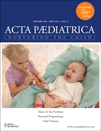Hepatoblastoma in a 4-year-old girl with Fanconi anaemia
Abstract
Case report: Hepatoblastoma was diagnosed in a 4-year-old girl receiving growth hormone substitution therapy for short stature. Owing to multiple congenital malformations, VACTERL-H (vertebral, anal, cardiac, tracheal, renal and limb anomalies with hydrocephalus) association had been suggested. Elevated chromosomal breakage rates and G2 phase arrest induced by DNA-crosslinking agents in cellular assays confirmed the diagnosis of Fanconi anaemia (FA), a tumour susceptibility syndrome known to be associated with hepatocellular carcinoma following androgen therapy. Subsequent genotyping revealed biallelic mutations in the FANCD1/BRCA2 gene.
Conclusion: We describe the first case of hepatoblastoma in a patient with FA to raise awareness of this tumour type in the close clinical observation of early cancer-prone forms of this condition, particularly in the presence of FANCD1/BRCA2 mutations. The present case also underscores the importance of FA testing in patients with VACTERL(-H).




